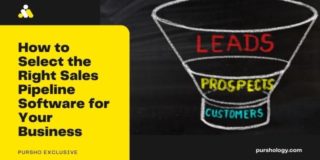The goal of sales enablement is to enable salespeople to do their jobs to the best of their ability and help an organization benefit the most. The sales process can be streamlined and boosted to promote effective sales and revenue growth.
There isn’t one single best practice for a sales force to perform; it takes multiple practices to help a sales rep perform their job, and relies on a business’ marketing team too. With that being said, here are the eight best sales enablement practices!
1. Identify the high-performing activities
There are two steps to this practice. The first is identifying the highest-performing salespeople in your company’s team, the sales leaders, and then identifying what it is that they do to make them the highest-performing. Once you’ve identified their activities, then you can ‘institutionalize’ them for the rest of your sales team.
Institutionalizing these practices means making them understandable and accessible as sales enablement content for the rest of your sales team and helping them learn to implement them via sales training. This means that your whole sales team can leverage these sales enablement practices learned at sales training at relevant points in the sales cycle and boost their sales performance as well as company revenue.
2. Provide access to content
The American Marketing Association states that 90% of the content is unused by sales teams. The biggest cause of this is that sales reps are just unable to find the content.
Sales enablement software should be:
Flexible – the content that is recommended should be based on performance, and sales event triggers should be controlled by your marketing automation platform. Sales conversations can then be aligned with the various stages in the buyer journey.
Integrated – the software should connect seamlessly with other tools (including some used in the marketing department to ensure alignment) to keep the sales process streamlined and automated.
Organized –all tools for content and sales should be easy to find and use in this repository.
This is one of the best practices for sales enablement because your salespeople are doing the best that they can to meet the sales quota, but they can’t be expected to do their job unless you help them by not only giving them the tools and the content that they need but making sure that they can access them easily.
3. Start small and grow gradually
You can’t expect huge changes overnight. Start with realistic expectations and small changes so that your reps can adjust well and your customers also don’t notice a sudden change.
Sales enablement isn’t about just the face-to-face interactions that your sales reps have with buyers but can extend to blogs, informational videos, and more passively-consumed content such as these. Taking the time to grow also means sticking to such content and not feeling demotivated when they don’t receive ridiculous amounts of attention.
Starting small and growing gradually applies to many things –content for salespeople, content for customers, growth of the company, growth of the sales team, and growth of your customer base. They have to happen at a healthy rate, otherwise, they could get out of hand very quickly and have a detrimental effect on your company.
4. Choose a launch opportunity
You probably already know that there’s little as exciting (or stressful!) as a launch. Whether it’s a new product or service, choosing a launch opportunity is one of the biggest parts of sales enablement.
Sometimes the entire success or failure of a product or service is in how well it was launched, so the right launch is key, and to do it right, it needs to be data-driven.
Leading up to a launch, you should do a few things:
With a small group of users, share updates on the good/service early and often. This will help provide you with invaluable feedback on how it can be improved and how it’s performing.
Feedback on the user interface, bugs, content, and sales forecasting can help shape the product into the best form itself.
5. Align your sales approach with the customer path
Customers’ paths vary depending on what they’re buying and their profile. In general, your sales team needs to capture and keep customers’ attention, and convince them of the value of the product/service, just like anyone in sales would need to. However, that doesn’t cover the whole customer path and buyer journey, and your specific company needs to find out what your customers’ path is like.
This can be done by doing the following:
Creating your buyer persona- Understand who your customers are. There isn’t just one buyer persona – there’s a big difference in the buyer journey for someone who’s been researching for months and someone who’s just started looking for a product/service.
Mapping touchpoints – these are times when customers come into contact with your company in any way. Ads, marketing, phone calls, experiences, etc.
Identifying pain points – what are how your customers face difficulties and where do they occur in the customer’s path? Which members of your team can best handle these, and what changes can you make to reduce or remove them?
Once you’ve done this, you will find that your sales approach is far more aligned to your customers’ path and you’ll end up with a lot more successful sales. This is one of the sales enablement best practices because it smoothens out what can sometimes be a bumpy road for buyers.
6. Understand your sales reps
Your sales reps shouldn’t be forced to follow rigid scripts or do their job in only one set way. New sales enablement technology and processes are there to help them and enable them to do their job more easily. You shouldn’t focus too much on process automation and strict scripts, but rather approach the entire process of sales enablement with an inclusive attitude and an open mind.
All of your salespeople are different and even within their roles perform tasks differently. Understanding the nuances of their job can help you to enable them to do even better. Schedule regular meetings with them to measure how well they’re doing, what their experiences are, and how they feel that you can help them.
Conclusion
The bottom line is, that prospects and customers expect a lot from their buying experience. Aside from just a hyper-personalized interaction, sales reps need to know exactly what to say, show, and do so that every buyer feels satisfied, and marketing teams need to be on the same page as well.
We hope that these sales enablement best practices have helped you understand more about how you can help your sales reps do their job to the best of their abilities and how your organization can boost its revenue.




